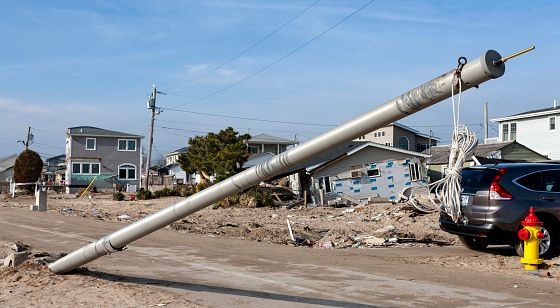The devastating event, which brought panic and destruction to eight countries in the Caribbean and North America, killed 233 people and cost an estimated $75 billion of damage.
Now, researchers have analysed the tweets of 344,957 of people living in New York and New Jersey – posted between October 22, 2012 and November 1, 2012 – to gauge clusters of highly charged emotions (anger, confusion, disgust, fear, sadness, surprise and shame) that people displayed during such a turbulent event.

The data also gave geographical and time data, which meant the team could identify when and where, in relation to the superstorm, each emotion became greater and weaker.
It is hoped that analysis such as this could be developed and help identify areas of mental health needs in real-time after future large-scale disasters.
The paper, titled a Novel Surveillance Approach for Disaster Mental Health, said: “We showed that excess risk of multiple basic emotions could be mapped in space and time as a step towards anticipating acute stress in the population and identifying community mental health need rapidly and efficiently in the aftermath of disaster.
“More studies are needed to better control for bias, identify associations with reliable and valid instruments measuring mental health, and to explore computational methods for continued model-fitting, causal relationships, and ongoing evaluation.
“Our study may be a starting point also for more fully elaborated models that can either prospectively detect mental health risk using real-time social media data or detect excess risk of emotional reactions in areas that lack efficient infrastructure during and after disasters.
“As such, social media data may be used for mental health surveillance after large scale disasters to help identify areas of mental health needs and to guide us in our knowledge where we may most effectively intervene to reduce the mental health consequences of disasters.”

The destruction caused at Breezy Point, in Queens, NY. Credit: Getty
Hurricane Sandy was classed as a category 3 storm with winds measured at 115mph (185 km/h).
It is the second costliest hurricane in US history second only to Katrina which battered the area around Louisiana in 2005, leaving $108 billion of destruction and more than 1,800 people dead.
Currently, a team around Dr Martin Sykora, Dr Suzanne Elayan and Professor Tom Jackson, all based at the Centre for Information Management (CIM), in the School of Business and Economics at Loughborough, are looking at modelling person-level mental health conditions from social media data.
The aim is to further develop the EMOTIVE engine, which is one of the techniques used to conduct advanced sentiment analysis, specifically for detecting fine-grained emotions.
It is hoped that with further research these techniques will in the future become directly applicable to public health surveillance during similar crises.
ENDS

